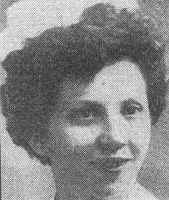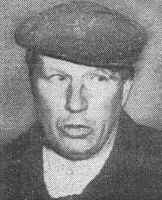|
"Death In The Boiling Sea."
All twelve members of the crew are feared to have
died on board the storm-battered wreck of a Scots trawler yesterday. And
yesterday a 13th man died of exposure trying to reach them.
Last night their boat, the Aberdeen trawler George
Robb, lay crushed and broken beneath the 200-foot needle-sharp Stacs of
Duncansby, near John O'Groats. It is believed that some of the bodies
may still be in the trawler's hulk.
For three hours the crew were trapped inside her by
the raging seas within sight of a lifeboat and coastguards battling to
reach them. Rescue workers saw lights flickering in the wheelhouse and
heard the blast of her siren four times. But no-one could reach the
vessel as she began to break-up. As horrified coastguards watched, the
wheelhouse was crushed and swept away.
One of the crew is thought have leapt overboard in
a last desperate bid to escape. His half-naked body was found at the
foot of the jagged rocks, 30 yds from the trawler. The trawler ran
aground about 11.30 p.m. on Sunday.
 |
(Original picture
reproduced with
kind permission.)
Mrs Betty Ham (left)
Mr. John Green (right.) (Click
on picture to enlarge.) |
 |
Less than an hour later coastguards were led to the
spot by 28 year-old Betty Ham. Along with her husband, father and
sister, ex-nurse Betty was the first to find the stricken boat.
One of the coastguards, Eric Campbell, 55 (this is
wrong he was 50), of Wick, collapsed on his way across the cliff tops to
the wreck. Other coastguards helped to carry him to Duncansby
lighthouse, but he died on the way. Mr. Campbell, who was station
officer at Wick and second-in-command of the Northern Area Coastguards
is believed to have died from a heart attack brought on by exposure.
Mrs. Ham's father, crofter John Green, 58, New
Houses, John O'Groats, told how they found the doomed trawler. He said:
"My son-in-law, Willie, had picked up the trawler's Mayday call on
his wireless trawler band. The boat was only on the air for about five
minutes. All he heard was a call for immediate assistance, and the
boat's position. We took the car so far then walked about three miles
across the cliffs. The weather was terrible, I have never seen anything
like it."
He went on: "We were near the Stacs when we
caught a glimpse of the ship through the rain. We had no idea if she was
abandoned. Then someone must have seen our light because they started
sounding the ships' horn. We went back to the lighthouse to give them
the trawler's position."
Mr. green added: "When the coastguards arrived
from Wick and ScarfsSkerry we led them to the wreck. When we got there
the Longhope lifeboat had arrived from Orkney but couldn't get near the
trawler because of the seas. Some of the waves were shooting 30 to 40
feet over the fishing boat. The coastguards were trying to get a line on
board her from shore but it kept being blown back by the wind. Even if
it had reached the trawler, there was no one there to make it fast. The
fishermen were pinned inside the boat. Then one colossal wave broke
right over her and washed away the top of the wheelhouse."
 |
(Picture reproduced from the
original Daily Record newspaper - with kind permission.)
Like a scene from the Artic, the Aberdeen
trawler George Robb is battered by heavy seas as she lies on the
jagged rocks off Duncansby Head, Caithness.
Her entire crew is missing.
(Click on picture to enlarge.) |
The dead fisherman was found soon after daylight by
Mr. Green's son, John, 26, and a friend, 36-year-old Alex Sinclair. One
of the coastguards who had been out all night with the rescue party
said: "There absolutely nothing anyone could do. The poor devils
must have been taken completely by surprise."
|